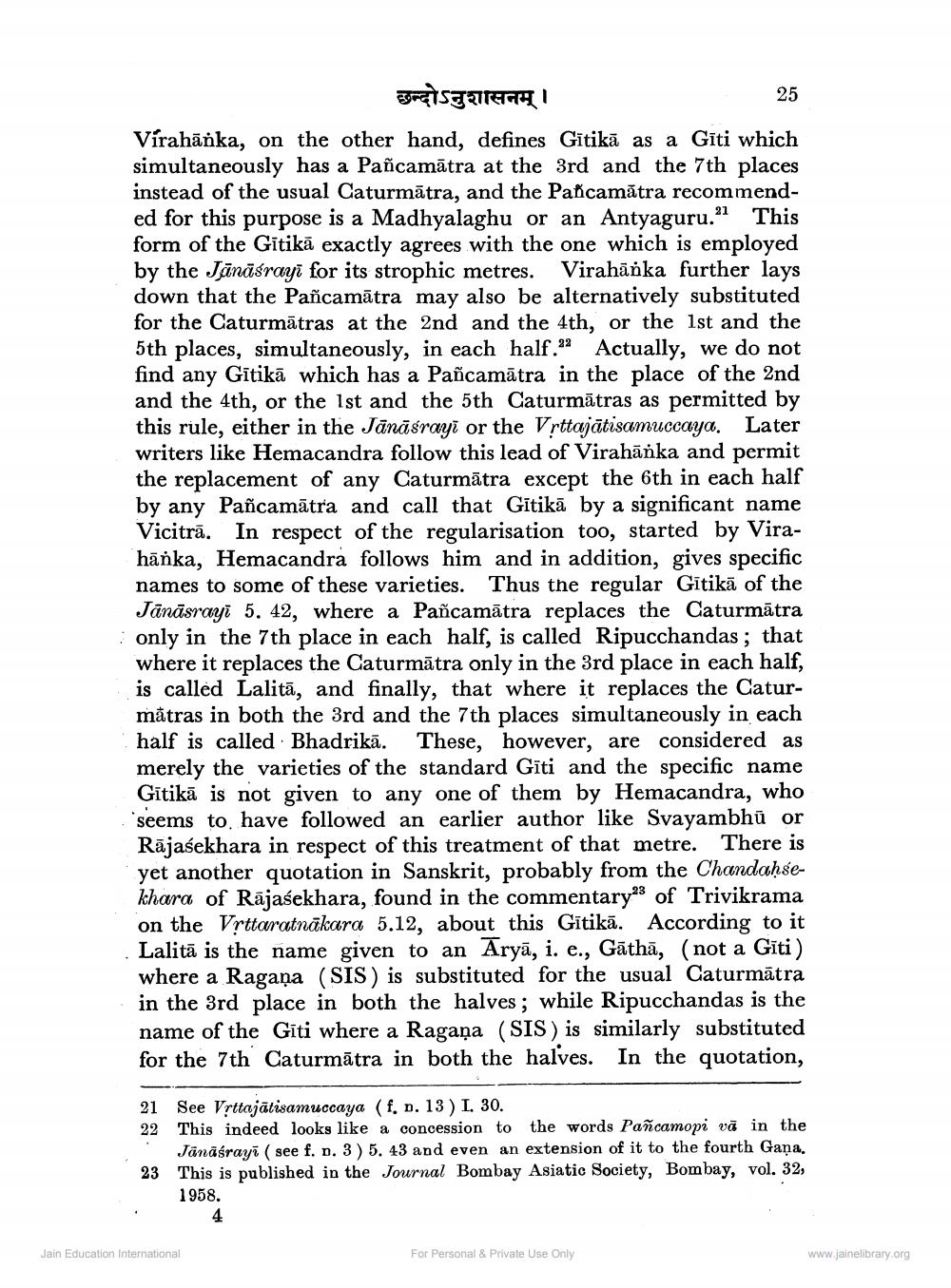________________
25
छन्दोऽनुशासनम् । Vírahānka, on the other hand, defines Gītikā as a Gīti which simultaneously has a Pañcamātra at the 3rd and the 7th places instead of the usual Caturmātra, and the Pancamātra recommended for this purpose is a Madhyalaghu or an Antyaguru. This form of the Gitikā exactly agrees with the one which is employed by the Jānäsrayi for its strophic metres. Virahānka further lays down that the Pañcamātra may also be alternatively substituted for the Caturmātras at the 2nd and the 4th, or the 1st and the 5th places, simultaneously, in each half.22 Actually, we do not find any Gītikā which has a Pañcamātra in the place of the 2nd and the 4th, or the 1st and the 5th Caturmātras as permitted by this rule, either in the Jānāsrayī or the Vrttajātisamuccaya. Later writers like Hemacandra follow this lead of Virahāňka and permit the replacement of any Caturmātra except the 6th in each half by any Pañcamātra and call that Gītikā by a significant name Vicitrā. In respect of the regularisation too, started by Virahāňka, Hemacandra follows him and in addition, gives specific names to some of these varieties. Thus the regular Gītikā of the
Jānāsrayi 5. 42, where a Pañcamātra replaces the Caturmātra : only in the 7th place in each half, is called Ripucchandas; that where it replaces the Caturmātra only in the 3rd place in each half, is called Lalitā, and finally, that where it replaces the Caturmātras in both the 3rd and the 7th places simultaneously in each half is called Bhadrikā. These, however, are considered as merely the varieties of the standard Gīti and the specific name Gītikā is not given to any one of them by Hemacandra, who 'seems to have followed an earlier author like Svayambhu or Rājasekhara in respect of this treatment of that metre. There is yet another quotation in Sanskrit, probably from the Chandaħsekhara of Rājasekhara, found in the commentarya of Trivikrama on the Vrttaratnākara 5.12, about this Gītikā. According to it Lalitā is the name given to an Aryā, i. e., Gāthā, (not a Gīti) where a Ragaņa (SIS) is substituted for the usual Caturmātra in the 3rd place in both the halves; while Ripucchandas is the name of the Gīti where a Ragaņa (SIS) is similarly substituted for the 7th Caturmātra in both the halves. In the quotation,
21 See Vrttajātisamuccaya (f. p. 13 ) I. 30. 22 This indeed looks like a concession to the words Pañcamopi vă in the
Jānāśrayī (see f. n. 3) 5. 43 and even an extension of it to the fourth Gana. This is published in the Journal Bombay Asiatic Society, Bombay, vol. 32, 1958.
Jain Education International
For Personal & Private Use Only
www.jainelibrary.org




